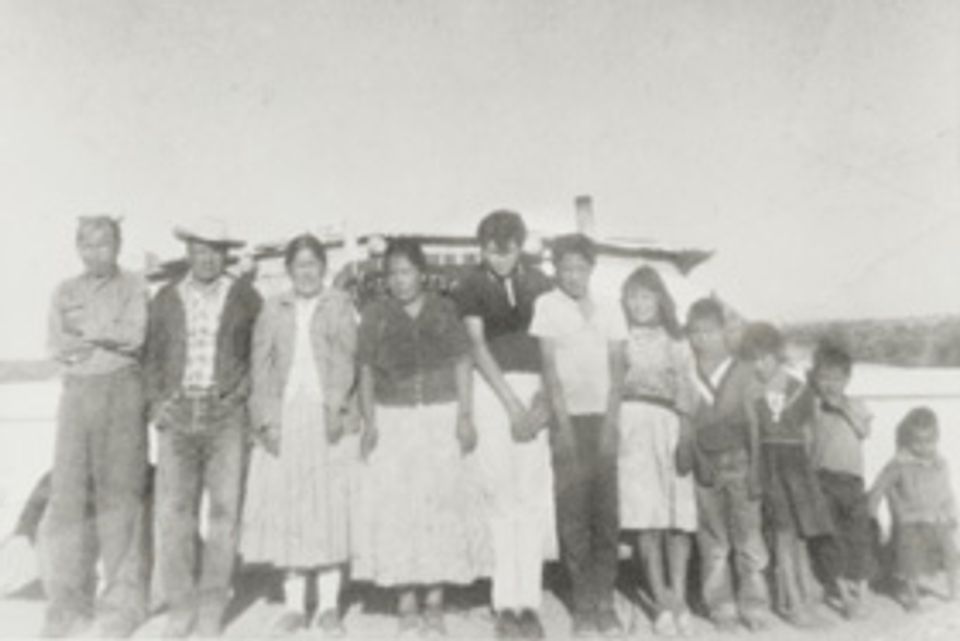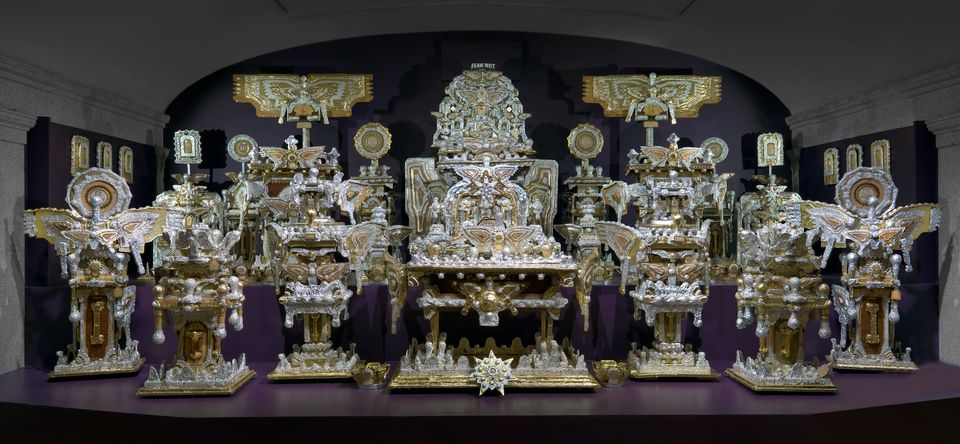Charlie Willeto

- Born
- Nageezi, Navajo Reservation (Dineteh), New Mexico, United States
- Died
- Nageezi, Navajo Reservation (Dineteh), New Mexico, United States
- Active in
- Blanco Canyon, New Mexico, United States
- Biography
A traditional Navajo sheepherder, Charlie Willeto began carving in the early 1960s, only a few years before his death. He used his works as barter—a standard form of trade on the reservation—for groceries at the Mauzy Trading Post near Lybrook. Jim Mauzy accepted Willeto's carvings, although they differed from the more conventional Navajo crafts of weaving and silverwork. Only one other life-sized carving exists; most of Willeto's four hundred figures range in size from twelve to thirty inches.
Willeto's figures came from a heritage of carving that had little to do with commercial signs. A Navajo curing rite, 'awééshíín'análnééh, prominently featured the carving of human figurines. These were usually between four and eight inches long, and were used only in a religious context specific to that ceremony. After the rite's completion, the doll-like carvings were usually taken to sacred sites and left with paired male and female prayer sticks. Willeto's statuesque figures are almost identical in form to many of these small, stylized carvings found in regions of the reservation where 'awééshíín'análnééh was performed. The painted markings may be decorative reminders of the jeweled inlay and painted bands found on many surviving examples of the figures.
Lynda Roscoe Hartigan Made with Passion: The Hemphill Folk Art Collection in the National Museum of American Art (Washington, D.C. and London: National Museum of American Art with the Smithsonian Institution Press, 1990)
- Luce Artist Biography
Charlie Willeto was a medicine man and the first Navajo known to create sculptures of figures and animals (Chuck and Jan Rosenak, Contemporary American Folk Art: A Collector’s Guide, 1996). He broke with traditional taboos against carving sacred images into wood, and created dreamlike men, women, owls, and spiritual creatures from old pieces of pine. The Willeto family believes that Charlie started to carve after he saw a “skinwalker,” a witch who could transform herself into an animal, and many of his pieces are inspired by this vision (“Navajo Folk Art Finding its Niche,” The Denver Post, 1996).














